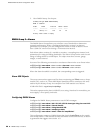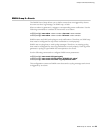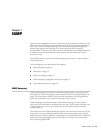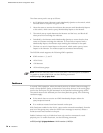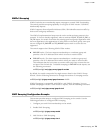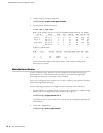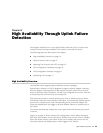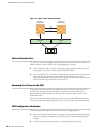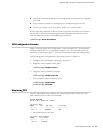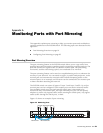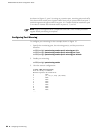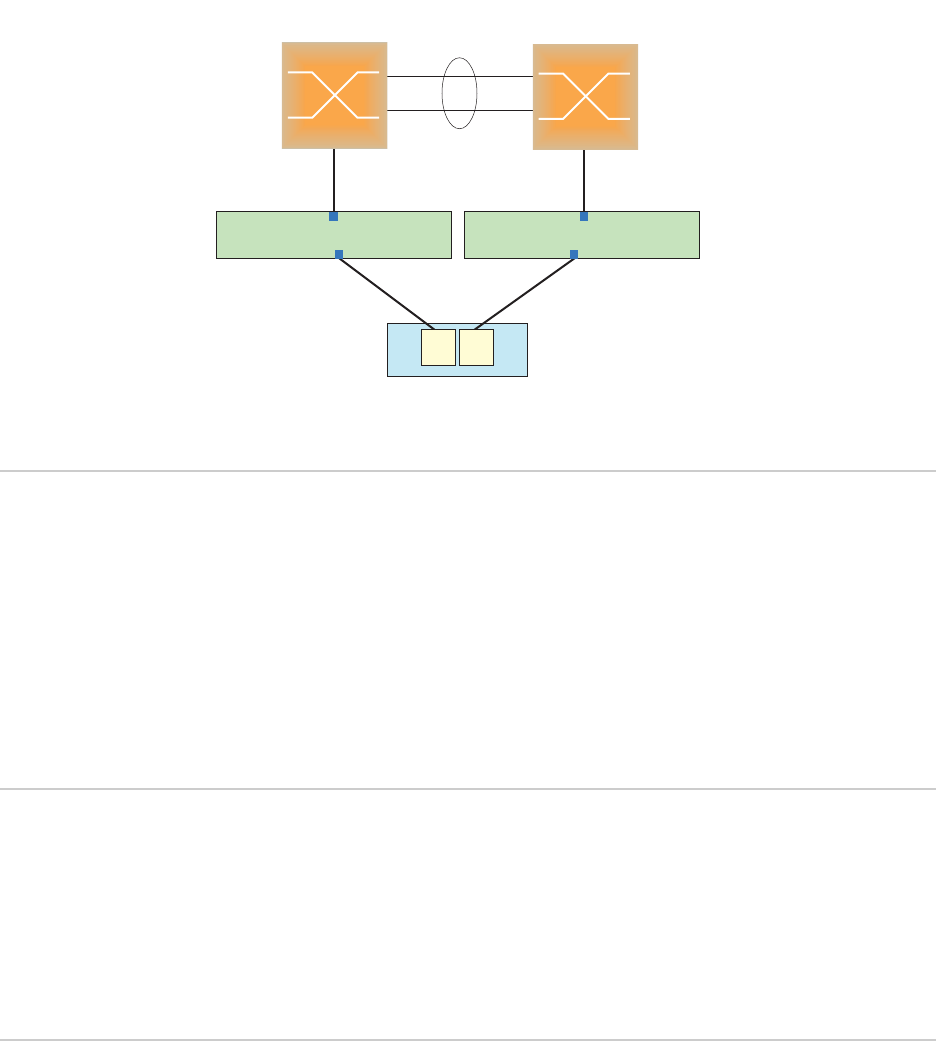
EX2500 Ethernet Switch Configuration Guide
76 Failure Detection Pair
Figure 14: Uplink Failure Detection Example
Failure Detection Pair
To use UFD, you must configure a Failure Detection Pair and then turn UFD on. A
Failure Detection Pair consists of the following groups of ports:
Link to Monitor (LtM)—The Link to Monitor group consists of one port or one
trunk group. The switch monitors the LtM for link failure.
Link to Disable (LtD)—The Link to Disable group consists of one or more ports
and trunk groups. When the switch detects a link failure on the LtM, it
automatically disables all ports in the LtD. When the LtM returns to service, the
switch automatically enables all ports in the LtD.
Spanning Tree Protocol with UFD
If Spanning Tree Protocol (STP) is enabled on ports in the LtM, then the switch
monitors the STP state and the link status on ports in the LtM. The switch
automatically disables the ports in the LtD when it detects a link failure or STP
BLOCKING state.
When the switch determines that ports in the LtM are in the FORWARDING state,
then it automatically enables the ports in the LtD, to fall back to normal operation.
UFD Configuration Guidelines
This section provides important information about configuring UFD.
Only one Failure Detection pair (one group of Links to Monitor and one group
of Links to Disable) is supported on the switch (all VLANs and Spanning Tree
Groups).
An LtM may contain either one port or one Multi-Link trunk group.
Server
Enterprise
Routing Switch
Enterprise
Routing Switch
LtD
LtM
NIC
1
NIC
2
EX2500
EX2500



